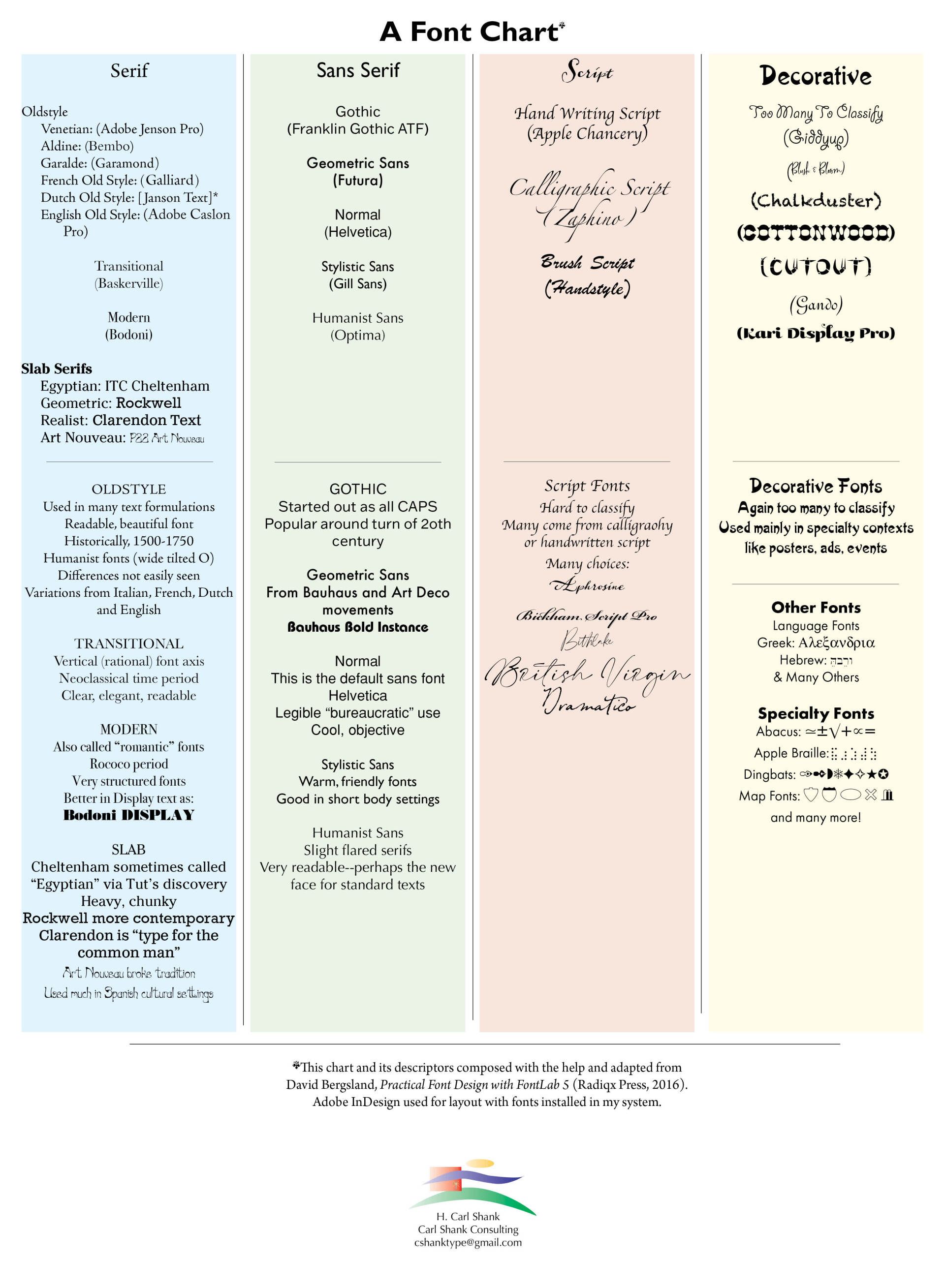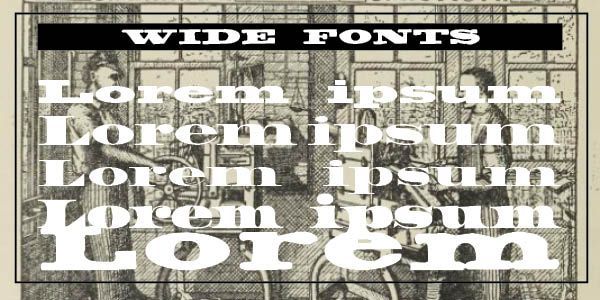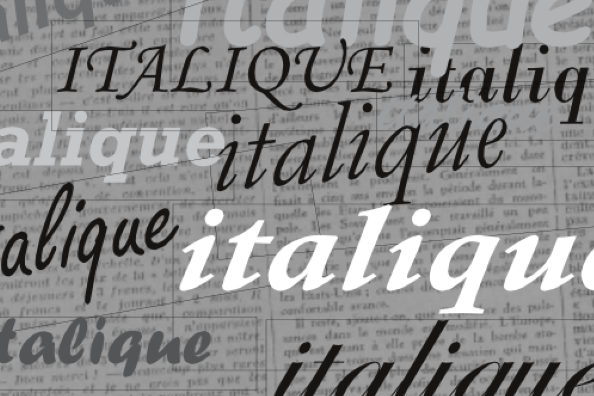A Helpful Font Chart
There happen to be a number of ways to classify fonts. Some of them make more sense to me than others, though I would hasten to point out I am no professional typographer. Robert Bringhurst in his masterful book, The Elements of Typographic Style, Hartley & Marks, 1992 edition, chooses categories consequent with historical periods of fine art, thus, Scribal or Carolingian, Renaissance, Mannerist, Baroque, Rococo, Neoclassical, Romantic, Realist, Geometric Modernism, Expressionist, Elegiac Post-Modernism, Geometric Post-Modernism.(1) Thomas Phinney's classifications taught in most design schools include: Old Style, Transitional, Modern, Slab Serif (or Egyptian), fat faces, wood type, Art Nouveau, Art Deco, synthesis, and grunge.(2) David Bergsland, from which I adapted the following chart and its descriptors, reduces the families to: Serif, Sans-Serif, Script and Decorative. Again, that is not all there is to the many fonts out there, but it is a good start.
The chart below gives a graphic representation of Bergsland's system of classification, along with some of my additional notes. Enjoy!
(1) Bergsland, David. Practical Font Design With FontLab 5 (pp. 217). Radiqx Press. Kindle Edition. (2) Ibid, p. 219.

Successful Layout & Design



